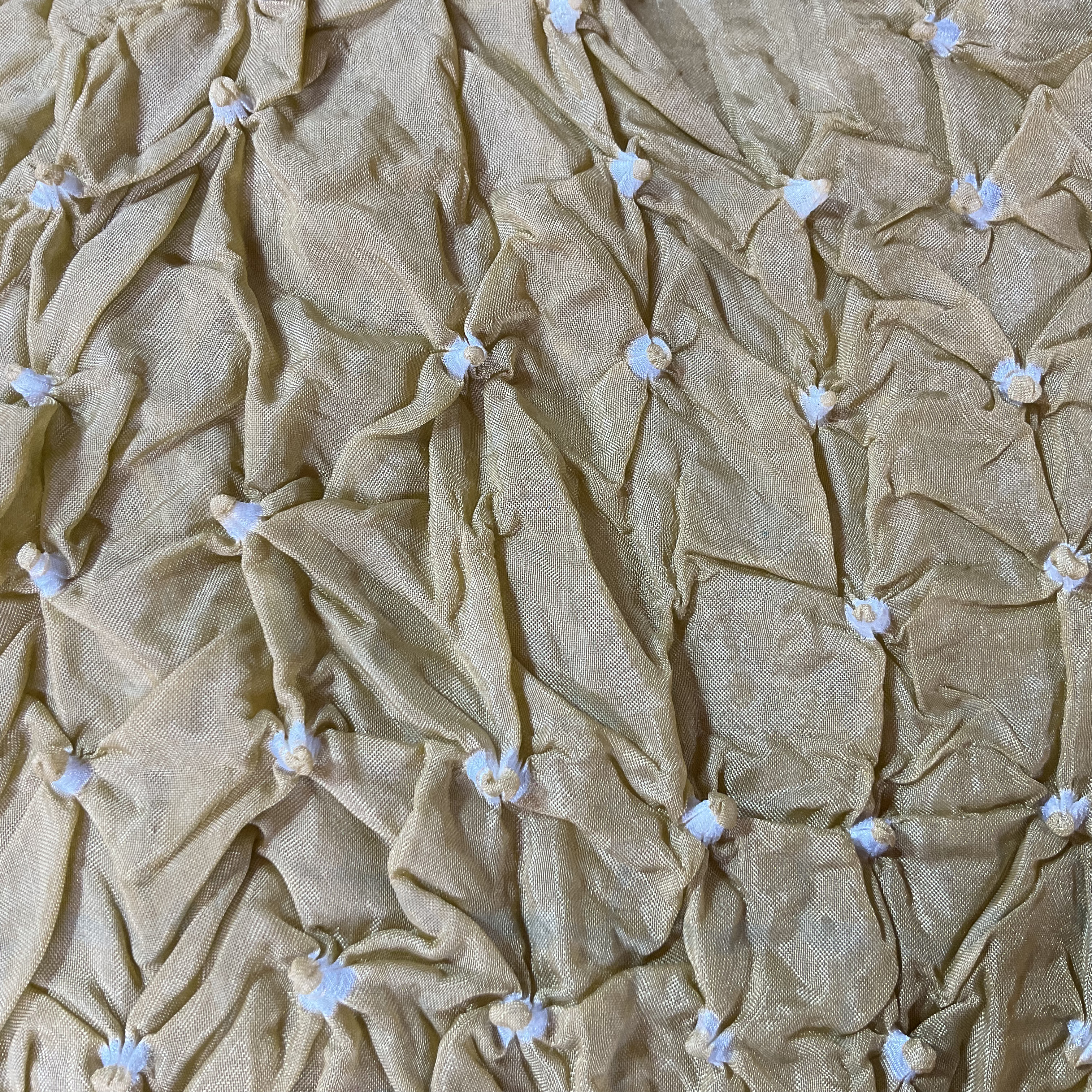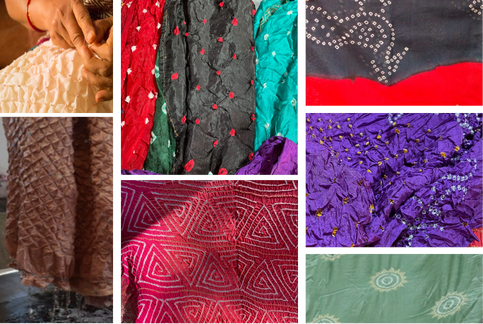Tie & Dye
Other Textiles based Craft

History
Tie and dye, a resist-dyeing technique, dates back to the 6th century AD in China, India, Japan, and Indonesia. It was also found in South America and Africa in the 5th century. Brought to India by the Saurashtrians in the 17th century, the craft flourished in Gujarat, Rajasthan, Madhya Pradesh, and Tamil Nadu. In Madurai, it became known as Madurai Sungadi, evolving under the patronage of local rulers and continuing as a traditional art form.




Raw Materials and Tools
Muslin, handloom, silk, and voile are commonly used fabrics, with bright colors like yellow, red, green, and maroon. Traditionally, natural dyes were used, but chemical dyes like vat, direct, napthol, and procion dyes are now prevalent. Cotton threads are used for tying knots, and artisans in Rajasthan sometimes use a metal ring with a pointed tip to lift the fabric for tying, aiding precision in creating intricate designs.
Process
The fabric is first marked with the desired design, then tied tightly with threads at specific points to resist dye penetration. The tied fabric is soaked, dyed, and heated in a dye bath. It is washed, reheated, cooled, and rinsed to enhance color fixation. Finally, the knots are untied to reveal the unique patterns. This meticulous process, which can take over a week, ensures intricate designs with vibrant colors and sharp contrasts.
Design and Color
Tie and dye designs include Leheriya, Mothda, Ekdali, and Shikari, achieved by varying the tying techniques. Madurai Sungadi is characterized by small white dots on brightly colored backgrounds, often with metallic zari borders. Traditional colors include red, yellow, green, and pink, with maroon being a classic favorite. While natural dyes were once standard, modern artisans often use chemical dyes for enhanced vibrancy and longevity.
Product Range
Products are sarees, salwar suits, shawls, shirts, bed sheets, pillowcases, handbags, and other textile products. Madurai Sungadi sarees, adorned with tiny white dots and contrasting woven zari borders, remain popular.
